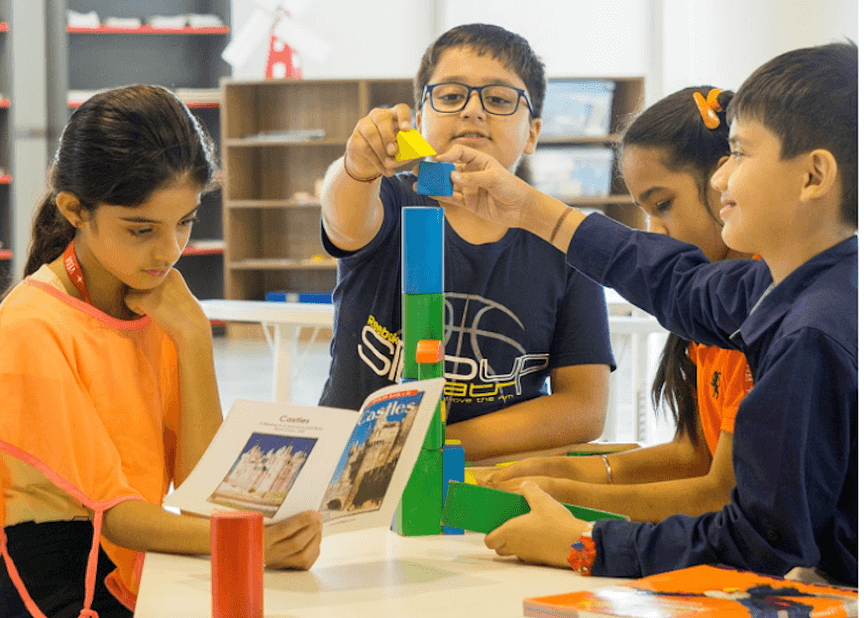Vega Schools are uniquely designed schools in India that, at the core, use project-based learning (PBL) as the foundational learning methodology. The architecture of Vega Schools was deliberately designed to support and promote PBL. There are no traditional classrooms.Rather, teachersutilise many different open and versatile learning configurations. Each grade level consists of spacious, flexible learning spaces that are designed to inspire and facilitate different activities, group interaction, andcollaboration. The open layout of the learning areas allows for frequent movement,rather than forcing students to be confined to a desk. Children also have the freedom to interact in mixed age groups. A key school philosophy is that when learners have the freedom to pursue personal interests, behavior and attitude towards learning are intrinsically motivatedandmore positive.
At Vega, educators are referred to as learning leadersrather than teachers. They are tasked with facilitating learning experiences and allowing learning to happen in a more organic way. Learning leaders at Vega receive ongoing, in-depth, and hands-on training in applying PBLtechniques and strategies with an inquiry approach.
Learning leadersintroduce a new project each quarter, typically building from smaller projects to a larger one that culminates in an exhibition. They carefully create learning experiences and opportunities that allow children to shine in different ways. Projects are hands-on, service-oriented, and benefit the wider community. PBL starts with the youngest children who engage in real world problems that are often local and spontaneous, rather than fixed. For example, when the school’s air conditioning system failed, the learning leaders used this as an opportunity for students to understand heating and cooling systems, examine air quality and pollution, and build their own air conditioningunit. In this way, ordinary eventsare used to stimulate new, rich learning experiences for the children.
In addition to quarterly PBL exhibitions, student further share and reflect on their learning through Student Led Conferences (SLCs). Each quarter, parents are invited to the school to take part in anSLC. Children share specific examples and artifacts of their learning and explain how they are applying their learning in new and different situations. During the SLC, parents are encouraged to ask questions and join in on a conversation with their child about teaching and learning. In this way, Vega moves away from the traditional academic approach of focusing solely on a final grade, and instead teaches parents and students alike to talk about the many varied learning experiences and opportunities that shape a young mind.
The Vega culture promotes continuous learning for all, and values input and contributions from the entire learning community, including non-certified staff such as janitors and cooks. Vega accomplishes this by applying a democratic process to all decision making. Although this model takes more time, in the long runit contributes to greater ownership and investment in the school by all stakeholders. A collaborative and distributive leadership model means that responsibility is distributed between and among staff members in a non-hierarchical manner. To promote this philosophy and practice, offices for staff at Vega do not exist. Staff members are encouraged to utilise whatever space best fits their needs at any particular time. Team and staff meetings are organised using a PBLand inquiry approach, in order to model and reinforce behaviors, strategiesand techniques that can be used with students. Learning leaders discover new ways to think about teaching and learning because there is a freedom to express, challenge and debate. A supportive culture means that faculty, staff and learners are encouraged to innovate and try new things, free from fear of failure.
Vega Schools continually challenge themselves to improve from a global perspective by being part of the Global Schools’ Alliance, a partnership of progressive schools around the world.


